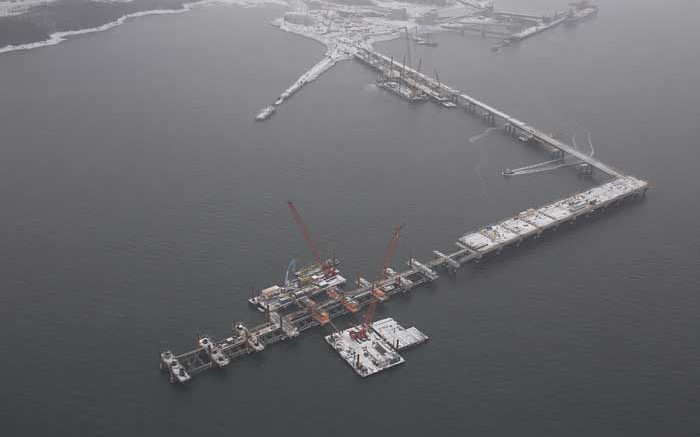VANCOUVER — The Taconite project feasibility study is complete, which means that in four months project-owner New Millennium Iron (TSX: NML) should know whether joint-venture partner Tata Steel will turn the Labrador Trough iron-ore project into a long-life mine.
It is no small decision: capital costs to bring just one of the two huge deposits at Taconite into production total $7.8 billion, and its deal with New Millennium stipulates global steel giant Tata would have to provide most of the funding.
“Together New Millennium and Tata Steel have been suggesting to the market that they are entertaining the concept of bringing in a third development partner for the project to spread costs and risk, noting that discussions are underway with interested steelmakers,” Haywood Securities analyst Colin Healey said in a note. “We believe that both parties would agree to allow Tata to defer an investment decision pending identification and formalization of an agreement with a third partner for development.”
The Taconite project covers two large, near-surface iron ore deposits named LabMag and KéMag. New Millennium owns 100% of KéMag and 80% of LabMag. The Naskapi Nation of Kawawachikamach owns the other 20%.
The feasibility study assesses Taconite in three ways: developing just LabMag, developing only KéMag and developing the two deposits simultaneously. The simultaneous option is unlikely, simply because the capital requirement would be so high.
Instead it is likely Tata and New Millennium will start by developing LabMag, which has slightly lower capital costs and a longer mine life. LabMag would be developed as an open-pit mine and concentrator producing a slurry that would be pumped through a 600 km long ferroduct to a pellet plant.
The pellet plant would be located near a new deepwater dock facility in Sept-Îles, which is under construction. New Millennium has invested $38 million to reserve 15 million tonnes of annual capacity at the facility so far.
The operation would churn out 22 million tonnes of concentrate annually, which would be processed into 17 million tonnes of pellets and 6 million tonnes of pellet feed (additives increase the mass during the pelletizing process).
Of the pellets, 12 million tonnes would be low-silica blast furnace grade fluxed pellets, while the other 5 million tonnes would be direct reduction-grade pellets.
Capital requirements to get LabMag to production total $7.8 billion. For that investment the partners could produce a tonne of concentrate for $43.03 and a tonne of pellets for $52.22.
The study assumes these products could then be sold for US$90 per tonne of concentrate and US$116.61 to US$126.86 per tonne of pellets, depending on the type.
Using these prices and an 8% discount rate, the LabMag project carries a $2.9-billion after-tax net present value and should generate a 14.1% after-tax internal rate of return, enabling capital payback in 5.6 years.
The mine would operate for 39 years based on current reserves.
Reserves at LabMag total 3.4 billion proven and probable tonnes grading 29.8% iron.
KéMag offers 1.9 billion proven and probable tonnes averaging 31.3% iron.
New Millennium and Tata have not yet entered into the formal permitting process for Taconite, but the partners says discussions with the applicable governments indicate the project could proceed through a single streamlined environmental assessment instead of completing separate provincial and federal processes.
LabMag and KéMag are less than 100 km apart, but a provincial border runs between the deposits, placing LabMag in Newfoundland and Labrador and KéMag in Quebec. Both are close to the Quebec town of Schefferville.
New Millennium and Tata have another project near Schefferville: their direct-shipping ore (DSO) project, which started trial production last year. Tata owns 80% of DSO, while New Millennium owns the rest.
At DSO 25 deposits along a 50 km trend host enough high-grade resources to support a 15-year mine life.
For now the project is using mobile facilities to crush and screen ore before it is trucked to Sept-Îles. Soon, however, a processing plant and product load-out facility will be complete, as will a new rail line running to the port. The facility will produce 4.2 million tonnes of sinter and pellet feed annually.
On news of the feasibility study for Taconite, New Millennium’s share price gained 9¢ to close at 49¢. The company has a 52-week share price range of 40¢ to $1.05, and 180 million shares outstanding.
At the end of 2013 New Millennium had $35 million in its treasury, after recording a $7.7-million net loss.


Be the first to comment on "New Millennium, Tata Steel show Taconite is feasible"